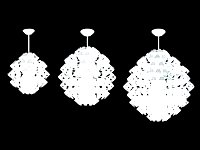Limits to the use of daylight
Where permitted by the building envelope, natural light can be the primary source of daylight
during the middle of the day for most of the year, through openings in vertical (doors,
windows, glazing) and horizontal (skylights) surfaces.
But the availability of natural light outdoors is typically very variable, depending for example
on the time of day, weather conditions and time of year. Latitude also plays an important role:
in the capitals of the European Union, the average annual hours of daylight available range
from 3,600 in Valletta to 1,550 in Brussels and 3,150 in Rome. Although the positive effects
of daylight on human beings have been scientifically proven, it is important to ensure that it
is glare-free and respects the privacy of the occupants.
Finally, in the summer season, thermal loads - generated in the interior by direct sunlight
passing through the glass surfaces - must be limited to avoid wasting energy through
excessive use of air conditioning. Because of these limitations, in real buildings the level of
illuminance needed for good comfort cannot be achieved by natural light alone, but always
comes from an intelligent combination of natural and artificial light.
Row 1
Row 2
Row 2
Presence and brightness sensor
SMART LIGHTING
SMART LIGHTING
26
27







